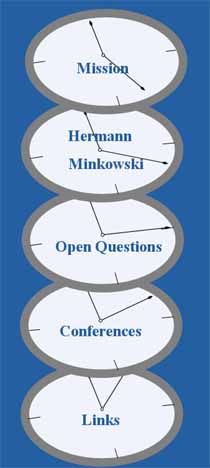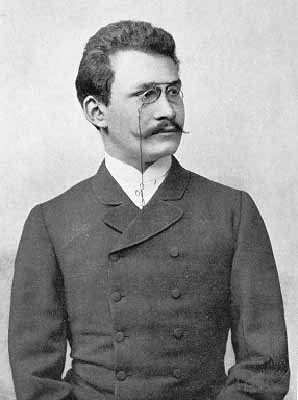|
|

|
Hermann Minkowski - the man who posed the problem

On September 21, 1908 Hermann Minkowski began his talk at the 80th Assembly of German Natural Scientists and Physicians with the now famous introduction: The views of space and time which I wish to lay before you have sprung from the soil of experimental physics, and therein lies their strength. They are radical. Henceforth space by itself, and time by itself, are doomed to fade away into mere shadows, and only a kind of union of the two will preserve an independent reality. [1, p. 75] Since then the question of the ontological status of this union of space and time has become the subject of a continued debate. It seems Minkowski believed the theory of relativity implied that our world and all objects are four-dimensional (4D) since he introduced the unification of space and time into an inseparable 4D entity (which he called "the World") in a rather substantival manner:
A point of space at a point of time, that is, a system of values, x, y, x, t, I will call a world-point. The multiplicity of all thinkable x, y, x, t systems of values we will christen the world... Not to leave a yawning void anywhere, we will imagine that everywhere and everywhen there is something perceptible. To avoid saying "matter" or "electricity" I will use for this something the word "substance". We fix our attention on the substantial point which is at the world-point x, y, x, t, and imagine that we are able to recognize this substantial point at any other time. Let the variations dx, dy, dz of the space co-ordinates of this substantial point correspond to a time element dt. Then we obtain, as an image, so to speak, of the everlasting career of the substantial point, a curve in the world, a world-line, the points of which can be referred unequivocally to the parameter t from - oo to + oo. The whole universe is seen to resolve itself into similar world-lines, and I would fain anticipate myself by saying that in my opinion physical laws might find their most perfect expression as reciprocal relations between these world-lines. [1, p. 76] As the union of space and time is, according to Minkowski, a 4D world (or what we now call Minkowski spacetime) the question of its ontological status appears to be: "Is Minkowski spacetime nothing more than a 4D mathematical space which represents an evolving in time 3D world or a mathematical model of a 4D world with time entirely given as the forth dimension?" In other words, the issue of the nature of Minkowski spacetime is equivalent to the issue of the dimensionality of the world according to relativity - whether the world is 3D or 4D at the macroscopic scale. V. P.
References
|
|||